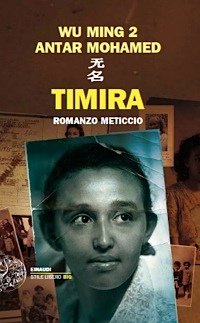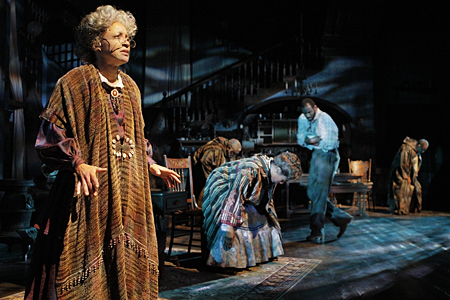Stavo leggendo La Vita è Sogno di Calderón de la Barca. Ti ci vuole un bel po' di tempo per capire che per il grande drammaturgo del Siglo de Oro non è che la vita sia proprio un sogno, nel senso di un'illusione o di una cosa che non possiamo controllare, o di un mondo alternativo dove non dobbiamo rendere conto delle nostre azioni. Nell'opera il giovane principe di Polonia, Sigismundo, è rinchiuso in una torre a causa di una previsione astrologica nefasta. Egli, infatti, è destinato a diventare un tiranno. Suo padre, il vecchio re Basilio, gli concede però una possibilità: lo libera per qualche ora per vedere se il suo carattere è davvero malvagio. Sigismundo, ritrovatosi improvvisamente libero e potente, ne approfitta per fare un po' di testa sua e vendicarsi di tutto e di tutti. Il re, quindi, lo rinchiude di nuovo, fancendogli credere di aver sognato di essere principe e libero. Ecco quindi, alla fine del secondo atto, il monologo che segue:
Sueña el rey que es rey, y vive
con este engaño mandando,
disponiendo y gobernando;
y este aplauso, que recibe
prestado, en el viento escribe,
y en cenizas le convierte
la muerte, ¡desdicha fuerte!
¿Que hay quien intente reinar,
viendo que ha de despertar
en el sueño de la muerte?
Sueña el rico en su riqueza,
que más cuidados le ofrece;
sueña el pobre que padece
su miseria y su pobreza;
sueña el que a medrar empieza,
sueña el que afana y pretende,
sueña el que agravia y ofende,
y en el mundo, en conclusión,
todos sueñan lo que son,
aunque ninguno lo entiende.
Yo sueño que estoy aquí
destas prisiones cargado,
y soñé que en otro estado
más lisonjero me vi.
¿Qué es la vida? Un frenesí.
¿Qué es la vida? Una ilusión,
una sombra, una ficción,
y el mayor bien es pequeño:
que toda la vida es sueño,
y los sueños, sueños son.
[Qui la traduzione italiana]
Queste riflessioni di Sigismundo sembrerebbero avvalorare l'assioma di Calderón, cioè che la vita è come un sogno, per la sua fugacità se non altro. Manca però tutto l'atto terzo, in cui le intenzioni di Basilio falliscono, ed il libero arbitrio prende il sopravvento sulla predestinazione. E' uno scontro generazionale, dove il vecchio re si ritroverà ai piedi del figlio, ma non schiacciato da quest'ultimo come aveva temuto. Sarà egli, infatti, a ritrarsi dinanzi al figlio. La predestinazione si rivelerà in un certo senso corretta, perché Basilio, rinchiudendo il figlio e privandolo sostanzialmente di una vita, aveva creato il mostro che tanto temeva. Sarà proprio Sigismundo, tuttavia, forte delle riflessioni sulla sua esperienza da tiranno e appoggiandosi agli esempi delle persone che gli stanno intorno, a mutare e ad imparare a domare i propri istinti animaleschi. L'opera si chiude quindi con un'affermazione dell'importanza del buon governo, delle buone azioni innanzi alla bestialità, alla violenza insita in noi tutti (come non ricordare qui l'incipit del dramma, quell' "hipógrifo violento, / que corriste parejas con el viento"?).

Quest'affermazione ("la vida es sueño") e la sua messa in discussione all'interno del testo (le interpretazioni si sprecano), mi ha fatto venire in mente un verso spesso citato –
"No es sueño la vida. ¡Alerta!"
–
di una poesia di García Lorca, contenuta nel suo lavoro che più amo, Poeta en Nueva York, scritto durante un viaggio nella città americana che al poeta spagnolo appariva come spaventosa, con i suoi enormi grattacieli e un'imperante frenesia che non faceva chiudere occhio ai suoi abitanti. Si tratta proprio di quella stessa frenesia che cita Calderón trecento anni prima (anche se lì ha l'accezione di eccitazione, delirio), che forse se ci pensiamo bene qui ha la stessa valenza anche se usata in un contesto diverso. La raccolta di poesie di García Lorca, però, è famosa come la sua svolta surrealista e a me il surrealismo fa venire in mente la dimensione onirica, quella enfatizzata da Dalí o da Buñuel per capirci. Quindi, mentre Calderón probabilmente finisce per negare che la vita sia come un sogno, smentendo così Platone, era García Lorca dell'opinione che la vita, per lo meno questa che lui stava sbirciando nella città più moderna della sua epoca, è un incubo? Chissà se Lorca voleva citare proprio il testo di Calderón de la Barca. Io non sono un'ispanista, quindi non ho risposte, però il ponte è suggestivo.
Ciudad Sin Sueño (Nocturno del Brooklyn Bridge)
No duerme nadie por el cielo. Nadie, nadie.
No duerme nadie.
Las
criaturas de la luna huelen y rondan sus cabañas.
Vendrán las iguanas vivas
a morder a los hombres que no sueñan
y el que huye con el corazón roto
encontrará por las esquinas
al increíble cocodrilo quieto bajo la tierna
protesta de los astros.
No duerme nadie por el mundo. Nadie, nadie.
No duerme nadie.
Hay un
muerto en el cementerio más lejano
que se queja tres años
porque tiene
un paisaje seco en la rodilla;
y el niño que enterraron esta mañana lloraba
tanto
que hubo necesidad de llamar a los perros para que callase.
No es sueño la vida. ¡Alerta! ¡Alerta! ¡Alerta!
Nos caemos por las
escaleras para comer la tierra húmeda
o subimos al filo de la nieve con el
coro de las dalias muertas.
Pero no hay olvido, ni sueño:
carne viva.
Los besos atan las bocas
en una maraña de venas recientes
y al que le
duele su dolor le dolerá sin descanso
y al que teme la muerte la llevará
sobre sus hombros.
Un día
los caballos vivirán en las tabernas
y las hormigas furiosas
atacarán los cielos amarillos que se refugian en los ojos de las vacas.
Otro día
veremos la resurrección de las mariposas disecadas
y aún
andando por un paisaje de esponjas grises y barcos mudos
veremos brillar
nuestro anillo y manar rosas de nuestra lengua.
¡Alerta! ¡Alerta! ¡Alerta!
A los que guardan todavía huellas de zarpa y aguacero,
a aquel muchacho
que llora porque no sabe la invención del puente
o a aquel muerto que ya no
tiene más que la cabeza y un zapato,
hay que llevarlos al muro donde iguanas
y sierpes esperan,
donde espera la dentadura del oso,
donde espera la
mano momificada del niño
y la piel del camello se eriza con un violento
escalofrío azul.
No duerme nadie por el cielo. Nadie, nadie.
No duerme nadie.
Pero si
alguien cierra los ojos,
¡azotadlo, hijos míos, azotadlo!
Haya un panorama de ojos abiertos
y amargas llagas encendidas.
No duerme nadie por el mundo. Nadie, nadie.
Ya lo he dicho.
No duerme
nadie.
Pero si alguien tiene por la noche exceso de musgo en las sienes,
abrid los escotillones para que vea bajo la luna
las copas falsas, el
veneno y la calavera de los teatros.
[Vedi la traduzione italiana qui]




















